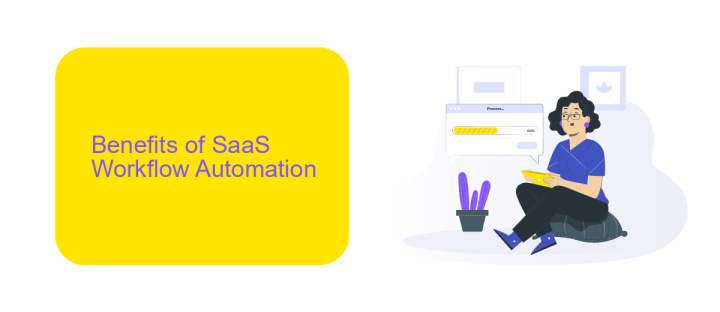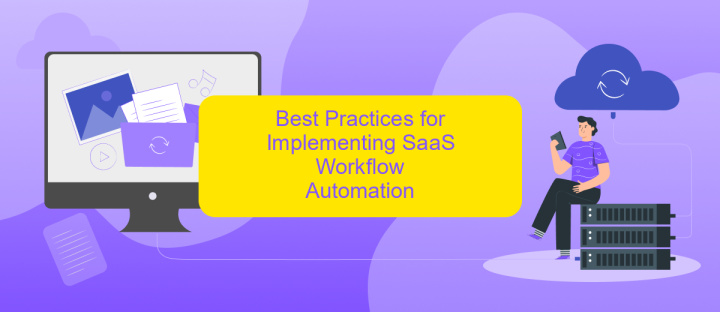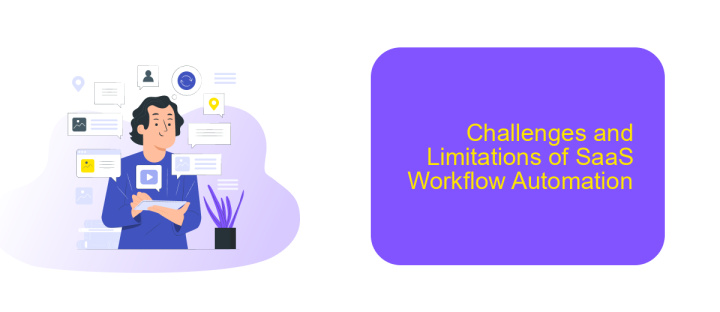SaaS Workflow Automation
In today's fast-paced digital landscape, SaaS workflow automation has become a game-changer for businesses looking to streamline operations and enhance productivity. By automating repetitive tasks and integrating various software applications, companies can save time, reduce errors, and focus on strategic initiatives. This article explores the benefits, key features, and implementation strategies of SaaS workflow automation to help you stay ahead in a competitive market.
Introduction
In today's fast-paced business environment, efficiency is key to staying competitive. SaaS workflow automation has emerged as a powerful solution, enabling organizations to streamline their processes, reduce manual tasks, and enhance productivity. By automating routine workflows, businesses can focus on strategic initiatives and drive growth.
- Reduces manual intervention
- Enhances productivity and efficiency
- Facilitates seamless integration between different platforms
- Improves accuracy and reduces errors
- Enables better resource management
One of the crucial aspects of SaaS workflow automation is the ability to integrate various tools and services seamlessly. Platforms like ApiX-Drive play a significant role in this by offering a user-friendly interface to connect different applications and automate data transfer. This not only saves time but also ensures that information flows smoothly across systems, providing a unified view of business operations.
Benefits of SaaS Workflow Automation

SaaS Workflow Automation offers significant benefits, including enhanced efficiency and productivity. By automating repetitive tasks and processes, businesses can save valuable time and resources, allowing employees to focus on more strategic activities. This not only accelerates project timelines but also reduces the likelihood of human error, ensuring higher accuracy and consistency in operations. Additionally, automation can provide real-time data and analytics, giving businesses insights into their workflow performance and enabling more informed decision-making.
Moreover, SaaS Workflow Automation facilitates seamless integration with various tools and platforms. Services like ApiX-Drive make it easy to connect different applications without the need for complex coding, streamlining data flow across systems. This interconnectedness enhances collaboration and communication within teams, as information is readily accessible and up-to-date. Ultimately, leveraging SaaS Workflow Automation can lead to cost savings, improved operational efficiency, and a more agile business environment, capable of adapting quickly to changing market demands.
Best Practices for Implementing SaaS Workflow Automation

Implementing SaaS workflow automation can greatly enhance productivity and efficiency in your organization. However, to reap the full benefits, it's crucial to follow best practices that ensure seamless integration and operation.
- Identify Key Processes: Start by identifying the most critical processes that would benefit from automation. Prioritize tasks that are repetitive, time-consuming, and prone to human error.
- Select the Right Tools: Choose a SaaS automation tool that suits your business needs. Consider factors like ease of use, scalability, and integration capabilities. ApiX-Drive is an excellent choice for setting up seamless integrations between various services.
- Plan for Integration: Ensure that the chosen automation tool can integrate smoothly with your existing systems. ApiX-Drive offers a wide range of integrations, making it easier to connect different platforms and streamline workflows.
- Test and Optimize: Before full-scale deployment, conduct thorough testing to identify any potential issues. Continuously monitor and optimize the automated workflows to ensure they are functioning as intended.
- Train Your Team: Provide adequate training to your team members to ensure they understand how to use the new automated systems effectively. This will help in maximizing the benefits of the automation tool.
By following these best practices, you can ensure a successful implementation of SaaS workflow automation, leading to increased efficiency and productivity. Leveraging tools like ApiX-Drive can further simplify the integration process, making it easier to automate complex workflows.
Challenges and Limitations of SaaS Workflow Automation

SaaS workflow automation offers numerous benefits, but it is not without its challenges and limitations. One significant issue is the complexity of integrating various tools and platforms, which can lead to compatibility problems and data silos.
Another challenge is ensuring data security and compliance, especially when dealing with sensitive information across multiple systems. This requires robust encryption and strict access controls to prevent unauthorized access and data breaches.
- Integration complexity and compatibility issues
- Data security and compliance concerns
- Scalability limitations
- Vendor lock-in risks
Despite these challenges, services like ApiX-Drive can help streamline the integration process by providing a user-friendly interface for connecting various applications seamlessly. However, businesses must carefully evaluate their specific needs and potential limitations before fully committing to SaaS workflow automation solutions.
Future Trends in SaaS Workflow Automation
As the SaaS workflow automation landscape continues to evolve, we can expect significant advancements in AI and machine learning integration. These technologies will enable more intelligent and adaptive workflows, capable of predicting user needs and automating complex tasks with minimal human intervention. Enhanced data analytics will also play a crucial role, providing actionable insights that help businesses optimize their processes and improve productivity.
Another emerging trend is the increasing importance of seamless integrations between various SaaS applications. Platforms like ApiX-Drive are paving the way for more efficient and user-friendly integration solutions, allowing businesses to connect disparate systems without the need for extensive coding. This will empower organizations to create more cohesive and streamlined workflows, ultimately leading to greater efficiency and reduced operational costs. As these trends continue to develop, SaaS workflow automation will become an even more indispensable tool for businesses of all sizes.


FAQ
What is SaaS Workflow Automation?
How does SaaS Workflow Automation benefit businesses?
What types of tasks can be automated using SaaS Workflow Automation?
How do I get started with SaaS Workflow Automation?
Is it difficult to set up SaaS Workflow Automation?
Apix-Drive is a simple and efficient system connector that will help you automate routine tasks and optimize business processes. You can save time and money, direct these resources to more important purposes. Test ApiX-Drive and make sure that this tool will relieve your employees and after 5 minutes of settings your business will start working faster.

